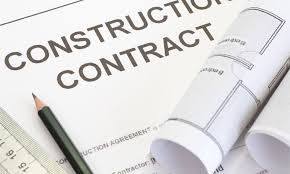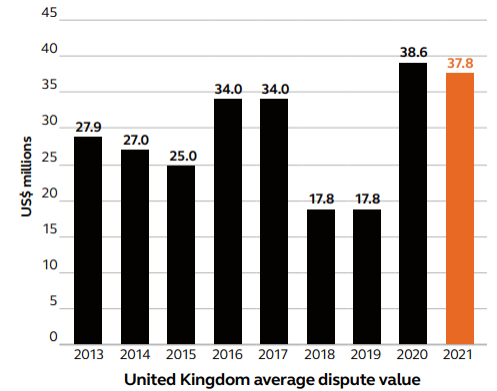INTRODUCTION
The Construction contract is the legally binding agreement formed between a property owner and contractor which outlines the terms and conditions for carrying out the construction project. It is a comprehensive document which covers different aspects of the project such as the scope of work, cost indulged in the particular construction project, responsibilities and dispute resolution. Also, these contracts can be negotiated for the construction projects. There are several construction projects such as fixed-price contracts and cost-plus contracts. In the UK, mostly different construction project ensures construction projects in the form of a Joint Contract Tribunal to solve dispute resolution (Mason and Potts, 2023). The help of a construction contract and its express terms give parties the right to claim the money and time. For example; the contractor can seek a claim and also employing party can claim damages in the area where the construction project is being delayed. In construction law, these contracts play a crucial role in ensuring that the construction project is completed within the specified time. The significance of the construction contract in a construction project is that it offers parties the obligations to perform during the project. The construction agreement formed between the property owner and contractor makes a legally binding force. The report will critically evaluate the critics' arguments for the strict application of contractual requirements in construction contracts which may result in more disputes between the parties also unnecessary disputes.
MAIN BODY
Significance of contract
The contract refers to the legally binding agreement formed between two or more parties with a specific purpose and the basic principles involved in the formation of a contract are to make an offer, Acceptance, consideration, legal intention between the parties and contractual capacity (Nazzini, 2024). The offer made by one of the parties should be clear so that the other party can understand the same and accept the offer's specific conditions. After this, it becomes important to exchange the consideration against the value of goods and services. To form a valid contract, it is important that both parties can able to create a legal relationship and the parties should be competent to enter into the contract. The main aim behind the contract formation is to outline the rights, obligations and responsibilities of each party (Ndekugri, Silverio and Mason, 2024). The intention behind the contract formation between two parties is to create a legally binding document which should be clear and concise. However, the condition is that parties should meet all the elements important for a valid contract.
Benefits of Contract Formation
- There are many benefits to forming a valid contract between the parties including Formalisation of the relationships:formalising the relationships, the legally binding agreement outlines the responsibilities of each party(Pizer, 2021). Formation of a contract helps in establishing the positive image of a particular company by strengthening the relationship with other companies.
- Prevention of the Disputes:The formation of a contract among parties helps prevent disputes by setting clear expectations and ensuring that both parties will understand their roles.
- Protecting from liability:Customisation of the contract can help businesses and safeguard them from potential legal liability.
- Saving time and money:The contract formation between the parties helps in safeguarding time and money. Prevention of disputes can be done with the help of contract formation between the parties. The contract formation helps in saving time and money by avoiding costly disputes among parties and there are fewer chances of misunderstanding between the parties.
- Ensuring confidentiality:contract formation between the parties ensures that matters are confidential and provides parties with confidentiality rights.
Role of Contract in Construction Projects
In construction law, contracts play a vital role in ensuring the competition of the construction project. by protecting both parties by outlining the working guidelines and how much the construction project will take place. After this with the help of contract formation in construction projects helps in ensuring fair payment between the parties. A contract somehow helps ensure that all the parties are paid fairly for their concerned work (Rawal et al., 2024). This construction contract helps in reducing disputes in the construction industry by including the clause for a mode of dispute resolution mechanism for the parties. So that if one of the parties fails to make compliance with the laws then the parties must disagree with the disagreement. Also, the contracts in the construction support anticipating the risk as it outlines how to proceed if the risk occurs during the project. There is a major significance of the construction contract in the construction project completion as it helps in maintaining a good relationship between the parties that helps ensure the smooth implementation of the construction project so that no disputes will occur.

Figure 1: Construction Contract
Types of Construction Contracts in the UK
The most common construction projects in the UK include the Joint Contracts Tribunal (JCT) and New Engineering Contract (NEC). JCT contracts are considered to be the most used construction contract in the UK that is also adopted by the construction industry as well. It also refers to the market standard for building the projects and lies on the challenges of using NEC forms so that people become more familiar with the JCT forms (Thomas and Wright, 2020). However, NEC contracts are usually drafted in plain English which can be easily understood by the parties.
|
Heads |
Joint Contracts Tribunal (JCT) |
New Engineering Contract (NEC). |
|
Purpose |
These contracts are standard forms of contract held by the British construction industry and can be also known as traditional contracts in the UK. |
The main purpose behind the formation of these contracts is to address any type of shortcomings in the prominent contracts and suits at the time. |
|
Procurement routes covered |
This contract is specially formed to include types of procurement options such as traditional, design and build, minor works, management contracting, construction management etc(Reynolds, 2020). the JCT form of contract helps in operating together by including amendments in practices. |
JCT and NEC library have considered many suits of the contracts to facilitate the procurement (McNamara and Sepasgozar, 2021). NEC contracts can also be formed and used at the international level. The newest version is recognised as ‘NEC4' and was framed with the publication of 2017. |
|
Approach |
The main feature of the JCT contract is to mainly concentrate on the allocation of risks and providing compensation without hands-on conflicting management procedures. |
The intention behind the NEC contracts is to balance the approach between the contractor and employer in resolving the issues related to cost, time-delayed projects and quality issues. For international projects, the most common type of construction used in these types of projects is NEC as they solve complex engineering projects. |
Table 1: Comparison between JCT and NEC4'
In Costain v Tarmac [2017] EWHC 319 (TCC), this court held that the main obligation of the NEC4 contract is to build trust and cooperation with each other party. This is preceded by the obligation to comply with the terms of the contract Winata, S.W. and (Hermawan, 2023). In NEC4, the obligations have been separated to highlight the fact that the parties must comply with the contractual terms. In Walford v Miles [1992] 2 AC 128, The NEC contract is described as inherently repugnant to the adverbial position of the parties while involving the negotiations in the contract. Also, the court in this case provided that NEC would be treated as a good faith obligation and also held in the same case of Van Oord UK Ltd v Dragados UK Ltd [2021] CSIH 50.
Role of relations in contracts and repudiating the arguments made by the critics
The role of relations in the construction contract is significant as it affects the written terms set out between the two parties that is property owner and contractor. The significance of the relations in the contract is discussed below:
- Coordination among parties:most construction project is found to be long-term projects which means it is important that parties establish trust and cooperation among parties so that transparency can be maintained to run a contract(Wechsuwanarux, Beckstead and Ueprapeepun, 2022). The environment during the contract formation in construction must remain healthy and cooperative so that parties can communicate with each other and no dispute will occur. s
- Flexibility and Adaptation:The Construction project faces some of the challenges which cannot be anticipated in advance. There are some problems in contract formation in construction such as nonpayment by one of the parties, time delays in the construction project, issues in design and specifications errors, contract issues, quality disputes and poor contract administration(Meliniotis, 2024). Involving flexibility and adaptations in the contracts helps parties to make agreements and negotiations on the specific amendment. It will not be supported to become rigid during the contract formation in a construction project. One of the reasons behind the disputes occurring in the construction project is due to the factor of rigidity and not changing the original terms of the contract.
- Dispute Resolution in a Construction project: If the parties to the contract become cooperative with each otherthen both parties can able to find the amicable solutions for the same. There is no need to go for litigation and arbitration process, one of the best methods to resolve the dispute is mediation(Mason and Potts, 2023). The construction project is a long-term process which can be succeeded by the parties of the contract. The contract includes a clause about where dispute resolution mode and how the parties will be going to resolve the disputes in which mode.

Figure 2:Global average dispute value in construction projects UK, 2022
From the above figure, it can be observed that the global average dispute value in construction projects has increased as compared to the previous year in 2019. The main causes behind the construction disputes are due to the no payment of one of the parties, noncompliance with the contractual obligation and delay in the completion of the construction project (Howard, Lavers, and Hanna, 2024). thus, it becomes important to use contractual provisions so that disputes among parties can be avoided and parties can understand the terms clearly. If parties understand the contractual terms then they will more easily will make compliance with the contractual provisions.
CONCLUSION
From the above report, it has been concluded that the relations play a significant role in ensuring that parties involved in the contract must be aware of the scope of work, and dispute resolution mode if one of the parties fails to make compliance with the contractual obligations. However, it is important to add contractual provisions in the contract as it enables the parties to resolve any minor issues effectively with each other by communicating well and it also helps in applying contract management application without any problem. The critic's argument does not support the significance of the contractual provision but the contract is important to make a construction project successful and completed within the specific time. It is suggested that project management is required to make a balance between the two approaches that is relational engagement and making compliance with the contractual obligations so that no dispute will occur in the future.
REFERENCES
Books and Journals
Gray, A.D., 2023. Relational Contract Theory, the Relevance of Contract Performance in Contract Interpretation and its Relevance to Employment Law in the United Kingdom and Australia. Common Law World Review, 52(2-3), pp.61-100.
Howard, C., Lavers, A. and Hanna, P., 2024. English Common Law. In International Construction Law (pp. 51-131). Informa Law from Routledge.
Janet, W.C., 2024. Applicable Law. In International Construction Law (pp. 1-22). Informa Law from Routledge.
Klee, L., 2018. International construction contract law. John Wiley & Sons.
Mason, J. and Potts, K., 2023. Construction law: from beginner to practitioner. Routledge.
McNamara, A.J. and Sepasgozar, S.M., 2021. Intelligent contract adoption in the construction industry: Concept development. Automation in construction, 122, p.103452.
Meliniotis, C., 2024. Statutory payment provisions, adjudication process and enforcement proceedings in the construction industry of the United Kingdom and New South Wales: a comparative legal analysis from the perspective of mitigating the injustice caused by adjudication's pseudo-temporary nature (Doctoral dissertation, University of Leicester).
Nazzini, R. ed., 2024. Construction Law in the 21st Century. Taylor & Francis.
Ndekugri, I., Silverio, A.K. and Mason, J., 2024. Enforcing payment obligations under construction contracts by insolvency proceedings. Journal of Financial Management of Property and Construction.
Pizer, S., 2021. Building bridges: The negotiation of paradox in psychoanalysis. Routledge.
Rawal, R., Waldek, D., Lim, T.W., Keating, R., Cordone, C., Jones, B.T., McLennan, M. and Gough, K., 2024. Construction Law Quarterly. Proceedings of the Institution of Civil Engineers-Management, Procurement and Law, 177(1), pp.52-58.
Reynolds, C., 2020. Reconstructing the Cornerstone of Employment Law: From the Contract of Employment to Relational Contract Theory. King's Inns Student L. Rev., 9, p.35.
Rudnyckyj, D., 2024. Islamic Finance in Africa: The Prospects for Sustainable Development: edited by M. Kabir Hassan, Aishath Muneeza, and Karamo NM Sonko, Cheltenham, UK and Northampton, MA, Edward Elgar Publishing, xxx+ 328 pp.
Sedgwick, T., 2024. A treatise on the rules which govern the interpretation and construction of statutory and constitutional law. BoD-Books on Demand.
Thomas, R. and Wright, M., 2020. Construction contract claims. Bloomsbury Publishing.
Wechsuwanarux, N., Beckstead, D. and Ueprapeepun, P., 2022. Thailand-Proposed Law Related to Payment Disputes under Construction Contracts. Const. L. Int'l, 17, p.17.
Winata, S.W. and Hermawan, S., 2023, December. Tender evaluation based on contract document. In AIP Conference Proceedings (Vol. 2680, No. 1). AIP Publishing.
Wolfshohl, A.K. and Sweers, C.M., 2021. Engineering, Procurement, and Construction Contracts in Texas: Key Provisions, Issues and Pitfalls. Const. LJ, 17, p.6.
Wu, H., Zhong, B., Li, H., Guo, J. and Wang, Y., 2021. On-site construction quality inspection using blockchain and smart contracts. Journal of Management in Engineering, 37(6), p.04021065.


 Company
Company













